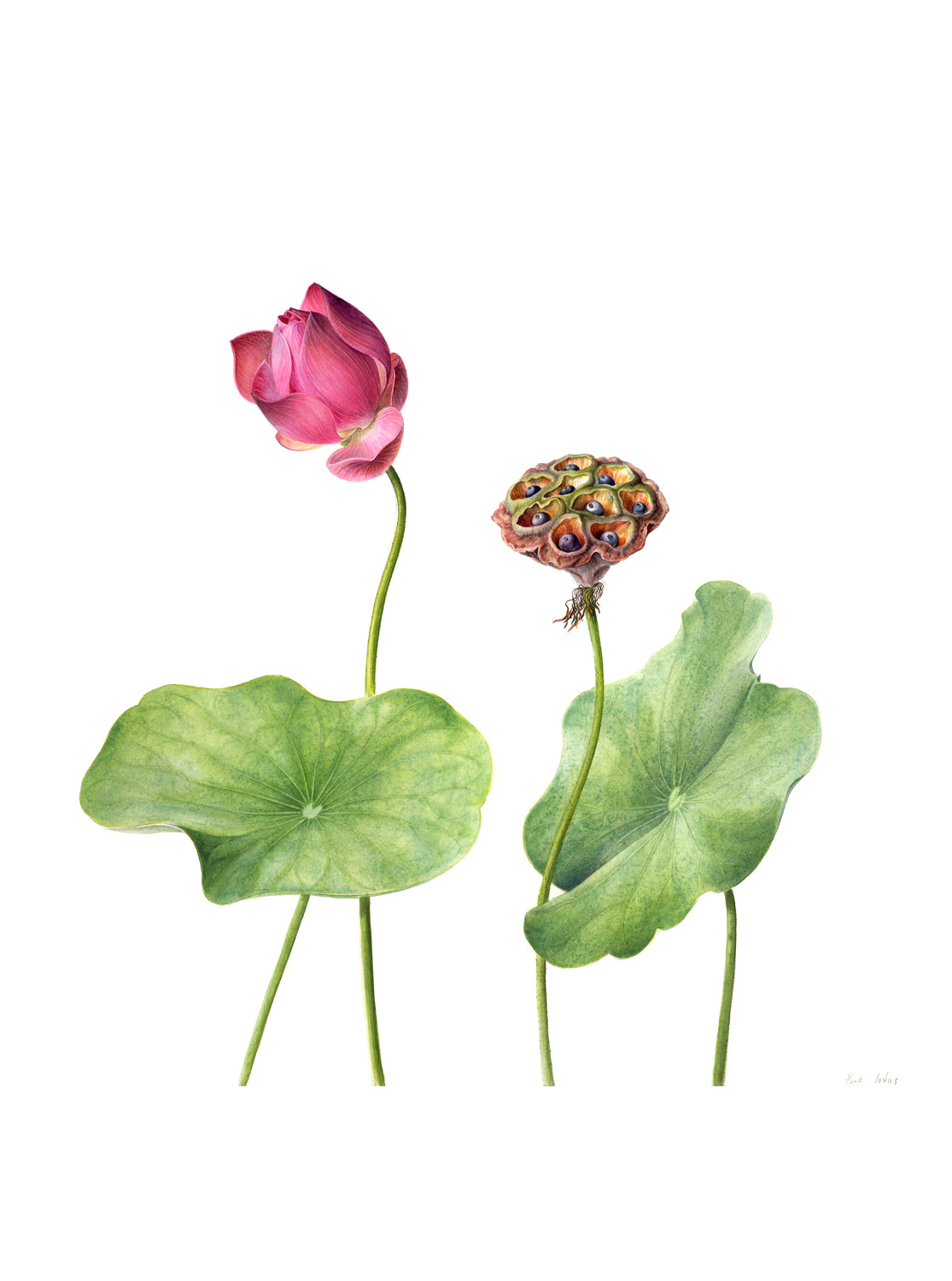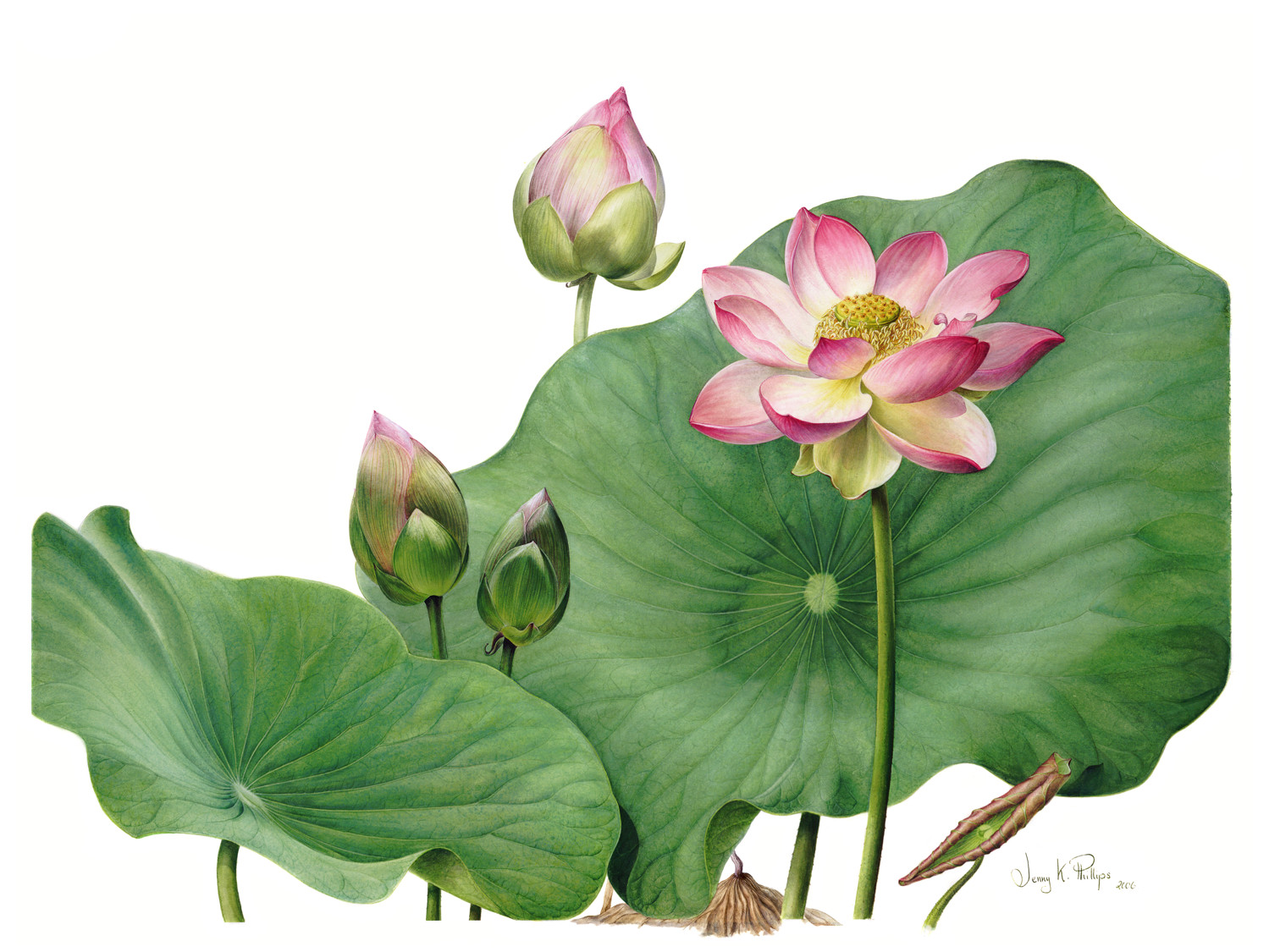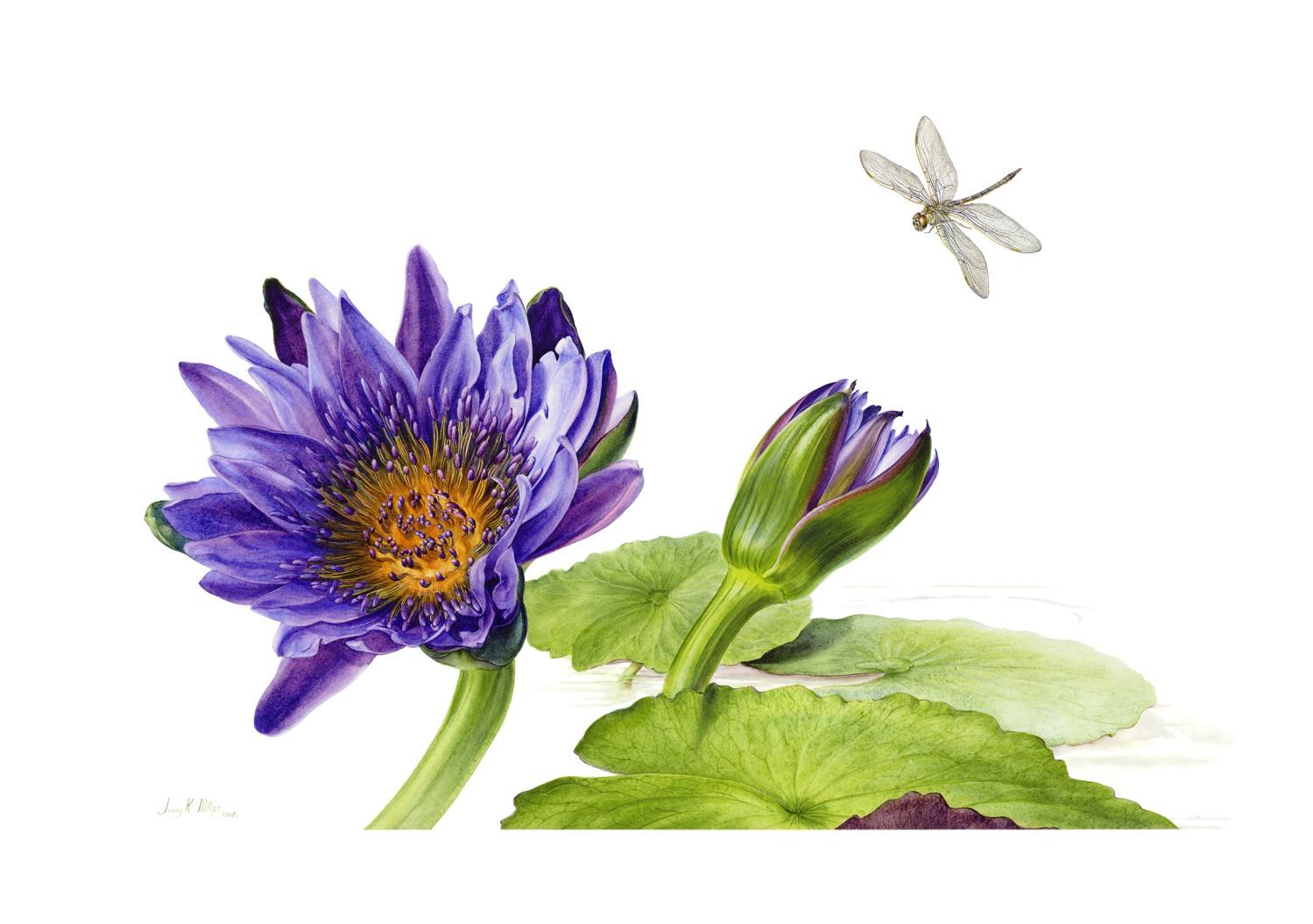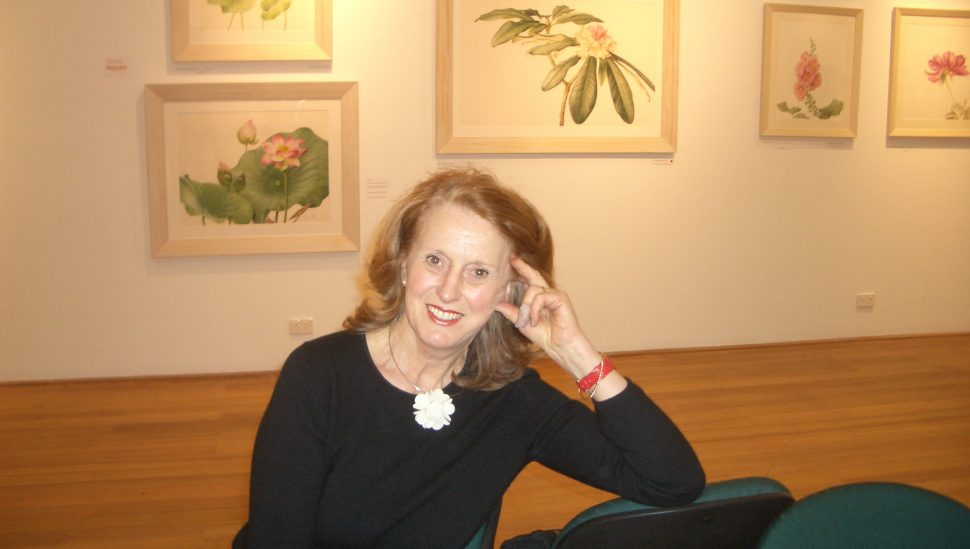Botanical illustrator and artist Jenny Phillips has been creating beautiful works on paper since 1971. Jenny is the recipient of numerous awards, including the prestigious Celia Rosser Award, in 2008. In 1995, Jenny founded the Botanical Art School of Melbourne which encompasses a Botanical Fine Art Gallery, school and art print business in South Yarra, Melbourne and where Jenny continues to teach and hold masterclasses.
Jenny grew up in rural Victoria, attending local schools and, later, Bendigo Teacher’s College. From an early age, Jenny possessed a love for both art and science classes, particularly drawing things in detail. In fact, she can remember as early as two years of age being dazzled by the process of brushing watercolour paint across a page.
This love became a well developed talent – one that has taken her around the world. Jenny has taught the art of botanical illustration in the UK, USA, Italy and South Africa. Jenny’s art not only appears in collections nationally and internationally, but three of her illustrations were selected to become part of the Prince of Wales’ Highgrove Florilegium.
-
 Illustration of Lotus Lily - flower and pod by Jenny PhillipsIllustration of Lotus Lily - flower and pod by Jenny Phillips
Illustration of Lotus Lily - flower and pod by Jenny PhillipsIllustration of Lotus Lily - flower and pod by Jenny Phillips -
 Illustration of Lotus Lily by Jenny PhillipsIllustration of Lotus Lily by Jenny Phillips
Illustration of Lotus Lily by Jenny PhillipsIllustration of Lotus Lily by Jenny Phillips -
 Illustration of Water Lily by Jenny PhillipsIllustration of Water Lily by Jenny Phillips
Illustration of Water Lily by Jenny PhillipsIllustration of Water Lily by Jenny Phillips
While inspired by the ability to explore the art galleries of Bendigo, Ballarat and Castlemaine as a teenager, Jenny was not allowed to go to art school or university to study, so it was her “insatiable appetite for learning” that helped foster her burgeoning talent, along with the influence of some important mentors.
“Some of my earliest mentors were from my own family. My grandparents and my mother were all fabulous gardeners. They taught me the joy and delight of planting, watching plants grow and observing every stage of their development. My interest and love of gardens and plants never left me,” says Jenny.
Another mentor was renowned botanical artist and illustrator Lady Joan Law-Smith (1919–1998): “Lady Law-Smith helped me appreciate the ‘poetry’ in plants, and encouraged me to believe in myself and my abilities, and my ability to use plants to express myself,” says Jenny.
Plus, Jenny’s own hard work and determination helped her to further hone her craft.
“My innate curiosity fuelled my desire to learn and experiment with effects, and to take on new challenges. Hard work as never phased me, and if I wasn’t happy with the result of my endeavours, then I would start all over again. I would always persevere until I achieved the desired result, a principle which I still follow and has stood me in good stead,” says Jenny.
It is no wonder then that Jenny’s stunning illustrations adorn Australia Post’s latest international stamp issue, Water Plants, which will be released on 27 September 2017. The stamps showcase three attractive flowering water plant species that are native to Australia: Entire Marshwort (Nymphoides geminata), Giant Waterlily (Nymphaea gigantea) and Lotus Lily (Nelumbo nucifera).
Jenny’s aim is always the same: to convey the joy that she experienced when observing the subject she was working on. This is something which she has certainly achieved in this latest project, depicting both the flower in detail and its growing conditions.
“The greater the depth of knowledge for the subject that is translated to the paper, the greater the feeling of achievement and success. This is applied to all my work in portraits, landscapes and botanicals,” says Jenny.
And Jenny certainly has a great love for plants and flowers.
“Where I grew up, on the Victorian–New South Wales border, droughts were always a constant part of life. As a very small child I witnessed miles and miles of dust pans; starving sheep that were too weak to move, just waiting to die. Often these droughts were followed by floods, and as the country was flat there would be water as far as the eye could see – with lines of trees always off in the distance. These memories have always been very powerful images in my mind. They made me incredibly aware of our need and dependence on plants – I then knew we had to treasure water and plants!” says Jenny.
“Plants are like people to me, so diverse – yet always fascinating and wonderful – and quite predictable when you study them. I love the ability of plants to adapt to their environment; the functional design evidenced in every part of the plants; the beautiful lines and patterns in their growth; the magnificent variety and beauty in the colours, tones and colour combinations; the intrigue in the pollinators; and their whole architecture is amazing,” says Jenny.
As well as a love of plants and flowers and obvious artistic talent, Jenny believes there are many skills required to be a good botanical illustrator, namely observational skills, curiosity, concentration, application, patience, integrity, sound decision-making and the ability to keep the balance between science and art.
So how does Jenny apply her skills to each project?
“It has always been my practice to paint from real life plants – I do not paint from photos. I believe paintings from photos to be more stylised than real. The joy of it all for me is to have the beautiful flower in front of me, to be able to study every detail and aspect of it, and to give as much plant information as I can, without it being boring. Like people, some plants don’t appeal to me to paint. They do have remarkable characteristics and design, however I don’t wish to spend a great deal of time studying or painting them, as my subject must appeal to me before I can spend hours or days recreating them on paper,” says Jenny.
Jenny also uses resource books to check native habitat and climactic conditions, for species with which she is not already familiar, or intricate details that may be used to distinguish one species from another such as the number of veins on their leaves and the like.
For the Water Plants stamp project, Jenny thought of it as an adventure of discovery, and a new and interesting challenge.
“I researched where I could obtain live specimens. I travelled to nurseries to seek out the specimens I needed, especially nurseries that specialised in certain plant types. I have always found nursery owners to be incredibly helpful, as we share a love of plants. Once I had selected my plants I placed them in large bins of water, studying them under the microscope, their structure, habits and life cycle, taking note of how they responded to light and various times of the day. When I had the precise details I required, then I would decide how to portray them in a way that would be suitable for a stamp. Obviously, I needed to be able to put in as much detail as possible. It was the fact that I loved the detail in the stamps in my collection as a child that inspired me to aim for exactness, or as close to it as I could succeed. That was the concern me for, and as a general rule, is what drives me as a botanical illustrator in all of my work, says Jenny.
“I am thrilled and delighted about having my illustrations on stamps, for use by the general public. It is such an urbane but universal place to display my work, and I am honoured to be part of a unique group of people who have had this opportunity,” concludes Jenny.
To learn more about Jenny Phillips’ work, visit her website, www.jennyphillips.org
View the gallery of stamps and technical details for this issue.
The Water Plants international stamp issue is available from 27 September 2017, online, at participating Post Offices and via mail order on 1800 331 794, while stocks last.
This article was produced at the time of publication and will not be updated.



